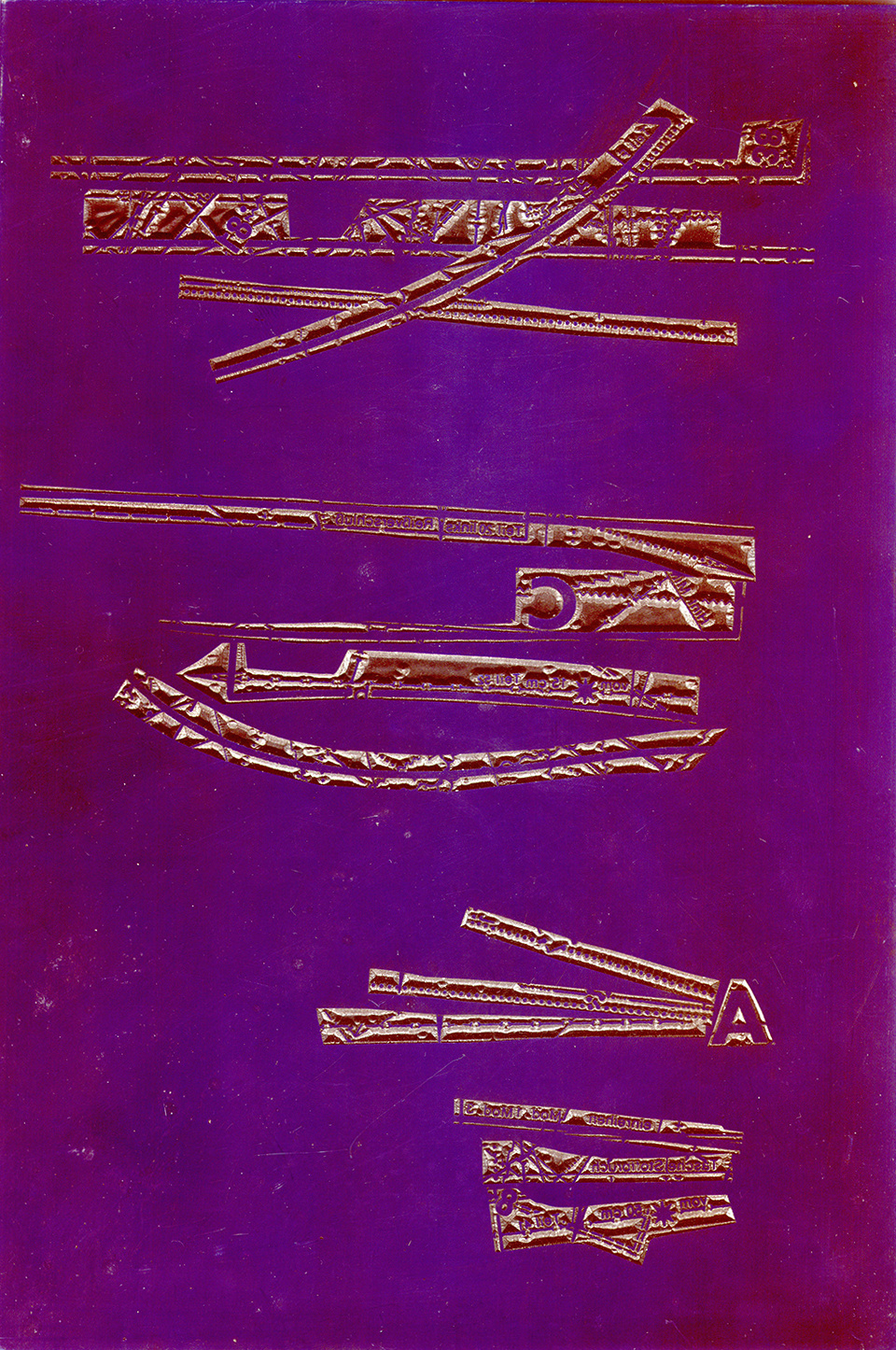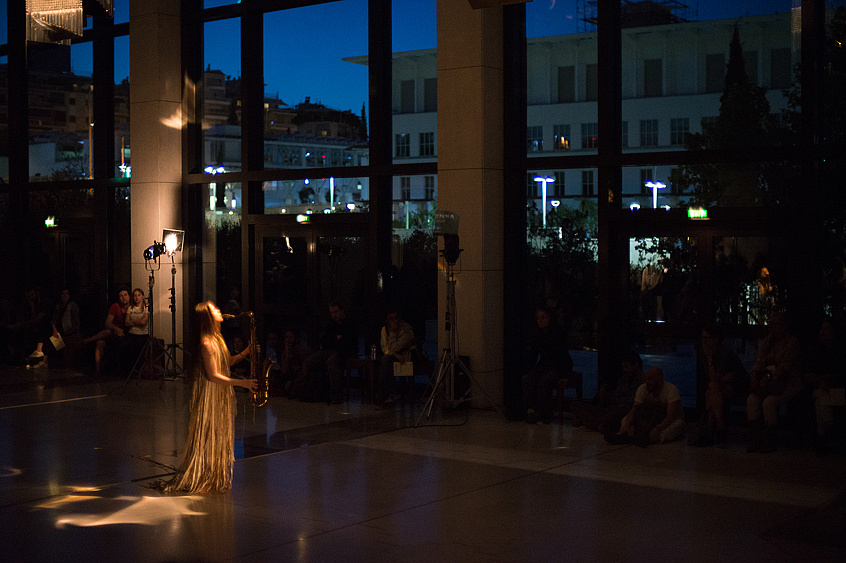Katalin Ladik’s art is founded on movement. Everything is set in motion, in constant flux and transformation; there is no imitation, representation, narrative. Even the direction of movement is not defined (to define it would be to stymie it), changing dynamically and overcoming all in its path.
For Ladik, born in Novi Sad, Serbia, in 1942, is a poet (1). However, she finds paper—poetry’s traditional medium—too static, and replaces it with her (often naked) body: sensual, individual, and political. Her controversial poetic performances (2) were accompanied by graphic scores—collages arranged in evocative images (3) that she then interpreted in situ. Her vocal compositions were constructed around the material quality of sound. Stripping language of meaning, the artist broke it down to phonemes to expose the primeval, instinctive, and mechanical aspects of language (4). Her staggering vocal range (from overtones to bass) turned each of her public appearances, whether solo or as part of music and experimental art groups (5), into a social event (6). In dynamic instability, Ladik finds freedom; in incomplete definition, potential; in active indecision, an escape from easy generalizations. She endlessly reinvents her language(s). Her work is based on constant differentiation (7)—distortion, aberration, pause—yet remains surprisingly coherent.
(1) Ladik’s surrealist, erotic poems were first published in 1962 in Symposion, an avant-garde magazine for Vojvodina’s Hungarian ethnic minority > setting in motion strategies for multicultural coexistence within two different languages;
(2) In Vabljene (1970), Ladik performed a shamanistic, phonic poem with traditional Hungarian instruments and her own hair: a subversive exposure of the male-dominated, puritanical culture of the time > setting in motion the fight for the right to (artistic) freedom;
(3) Ladik’s collage scores, serving as templates for bodily and oral performances, rely on the juxtaposition of normally incompatible elements > setting in motion heuristics;
(4) Language is not a rational construct: it emerges from the complex metalinguistic space > setting in motion discontinuity;
(5) Ladik was a member of two polyphonic avant-garde music groups, Acezantez and Spiritus Noister. Her participation (1973–76) in the art collective Bosch+Bosch opened a new realm > setting in motion intermediality, collaboration, and creative dialogue;
(6) Around 1975, Ladik was expelled from the League of Communists of Yugoslavia, accused of “immorality”; it was then, paradoxically, that she became a star on state TV > the dynamics of “objectively” mobile reality;
(7) “I am an androgyne: a liar. Therefore sincere. // I am an object of art, a centaur.” 1
—Marta Dziewańska
1 Katalin Ladik, “Follow Me into the Mythology” (1981). Translated by József Aradi.



